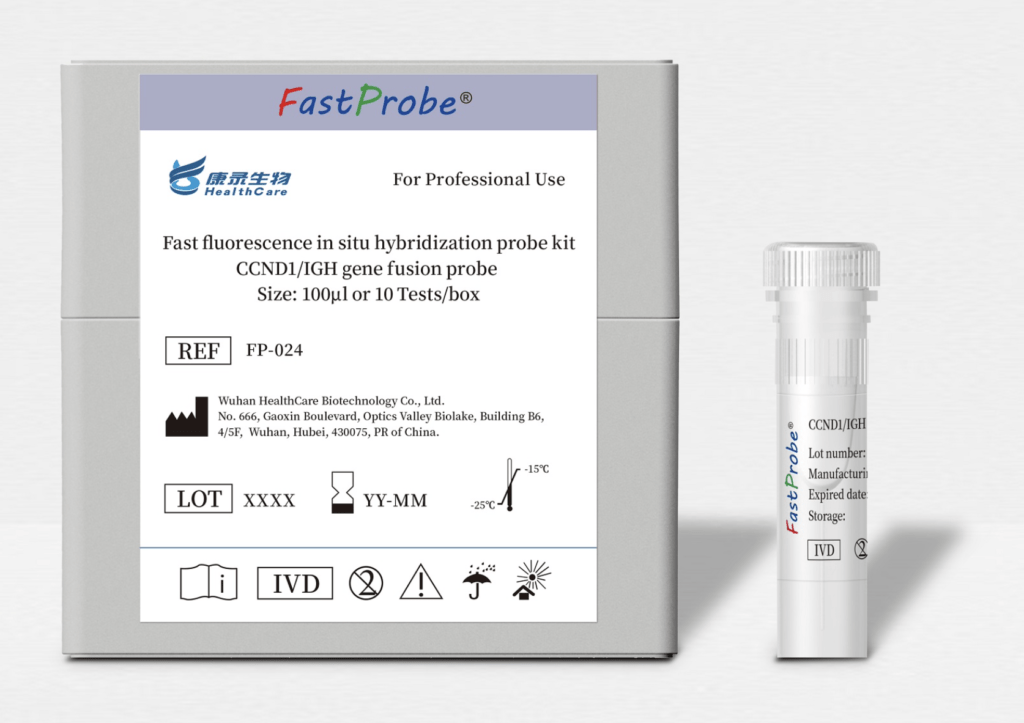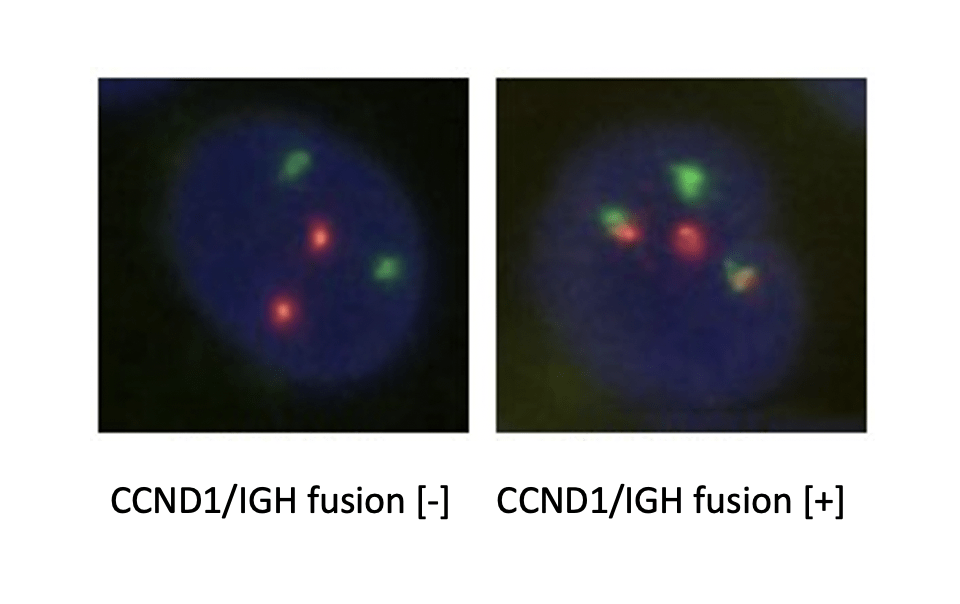
CCND1/IGH dual-color double fusion probe is used to detect the translocation of t(11;14)(q13.3;q32.3) which often occurs in MM. This translocation exists in the CCND1 gene near the IGH (immunoglobulin heavy chain) gene, which leads to overexpression of the CCDN1 gene. Detection of t (11; 14) translocation has important clinical significance.
CCND1/IGH is a dual-color, double-fusion probe with an orange-red fluorescent dye directly labeled with the CCND1 probe and a green fluorescent directly labeled IGH probe. Under normal conditions (CCND1/IGH gene did not fuse), it shows two orange-red signals and two green signals under a fluorescence microscope. When there is gene fusion, the green and orange-red signals form a yellow fusion signal as a recombination result.

t(11;14) is one of the most common abnormal translocations in MM. MM patients with t(11;14) translocation or no other genetic changes have a good prognosis, with a median survival of 50 months.

Product size: 100μL FISH probe ( ⬤ | ⬤ ) + Pretreatment reagent (10 tests) + Antifade staining solution DAPI (10 tests).